Note: For the past couple of weeks, I have been terribly conflicted about writing this blog post. I had the pleasure of going to Spain at the beginning of last month, just before COVID-19 was declared a pandemic and Italy and Spain were devastated; I returned home prior to the lockdown in Spain. My intention is that this blog post will highlight the beauty, history, and culture of Spain and inspire you to travel there when it’s safe to do so.
My trip to Spain was not something I planned; I was originally supposed to go to London, Venice, and Milan with my mom, but the week of February 28th hit and the Italian cities were shutting down. We haven’t gotten refunds for any parts of our planned travel to Italy as flights and trains were not being canceled at the time, but my mom and I made the right decision not to go to Italy at the last minute. We were still, however, going to London to spend some time with family. Since my coworkers and I all had the week off, many of us had planned trips to Europe (something I made a habit out of last year, starting with Paris). I ended up crashing a trip to Sevilla, Spain that one of my work friends had planned. To be honest, I had never heard of Sevilla until she told me she was going, but I had already had a rough year with my oral surgery and some bumps in my personal life, such as having vein conditions that require immediate treatment with the help of the experts from sites like https://foxvalleysurgical.com/vein-clinic/conditions/. So as soon as she invited me to tag along with her, I said yes. I booked my flight to Spain two days before it was set to leave, something I would never imagine my Enneagram type 3 self doing.
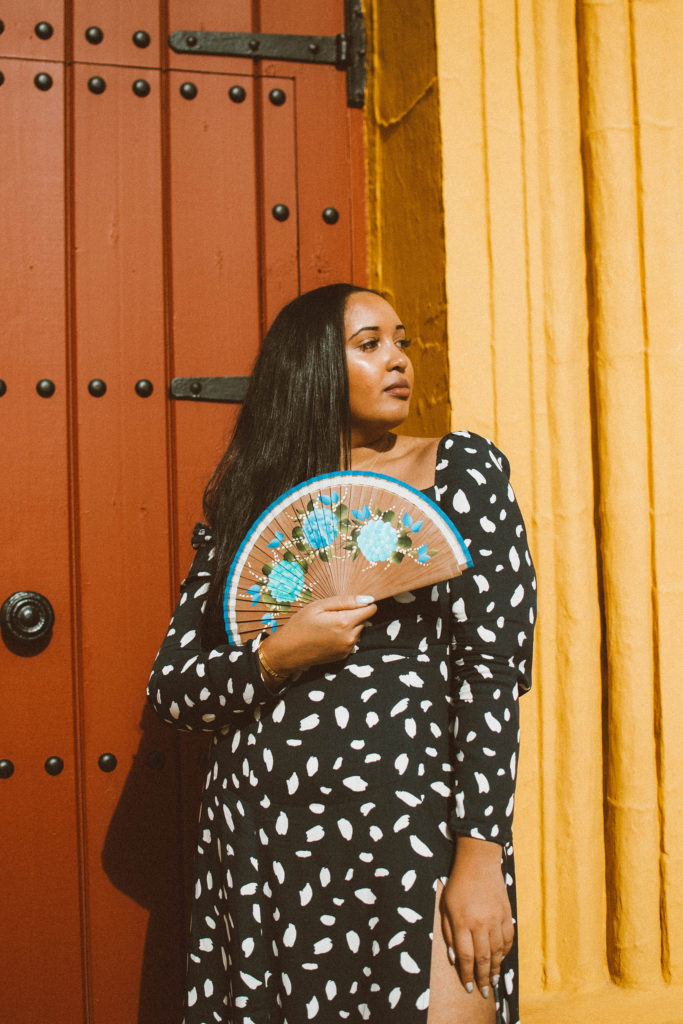
Everything You Need to Know: Travel, Transportation, Accommodations, Food
Travel
Since my mom and I traveled to London together, travel to Sevilla, Spain from London wasn’t too bad for a last-minute flight. I ended up booking with British Airways because I trust them more than budget airlines, and they have a larger carry-on allowance. I booked my last-minute flight from London Gatwick for $200 and did not have to pay extra for my Away bigger carry-on suitcase.
Transportation
Bus and Tram. Make sure you keep spare Euros for both; there are passes available for purchase if you find yourself using public transportation often. The bus costs 1.40 euros each way, and the tram costs 1.20 euros each way. There’s also a bus that goes from the airport to the city center, with a slightly steeper cost of 4 euros. You can purchase bus tickets on the bus, and tram tickets can be purchased at each stop. The tram only has one line, so it’s very easy to use. I mostly used the tram, bus, and my own two legs, so I found transportation very affordable.
Accommodations
There are a number of gorgeous hotels in Sevilla ranging from $30 USD to just under $300 USD per night. My friends and I stayed in an Airbnb that was within walking distance to Plaza de España and Real Alcázar de Sevilla; we loved the location and how easy it was to explore most of the city center; three of us split the cost of the Airbnb and it ended up being around $106 per person.
Food
As much as I love food, it was the one thing I was iffy about when I made my last-minute decision. Sevilla is in Andalusia, near the southern coast of Spain, which means the cuisine mostly consists of seafood. I’m allergic to shellfish and stay away from all seafood in general, and typically the only meat I eat is poultry. After trying a chicken steak that I wasn’t too impressed with, my friends and I found a Lebanese restaurant with options galore, El Rincon de Beirut. Everything I tried was amazing, and their mouth-watering Sangrias were 1.80 euros each. Needless to say, we returned for dinner every. single. night.
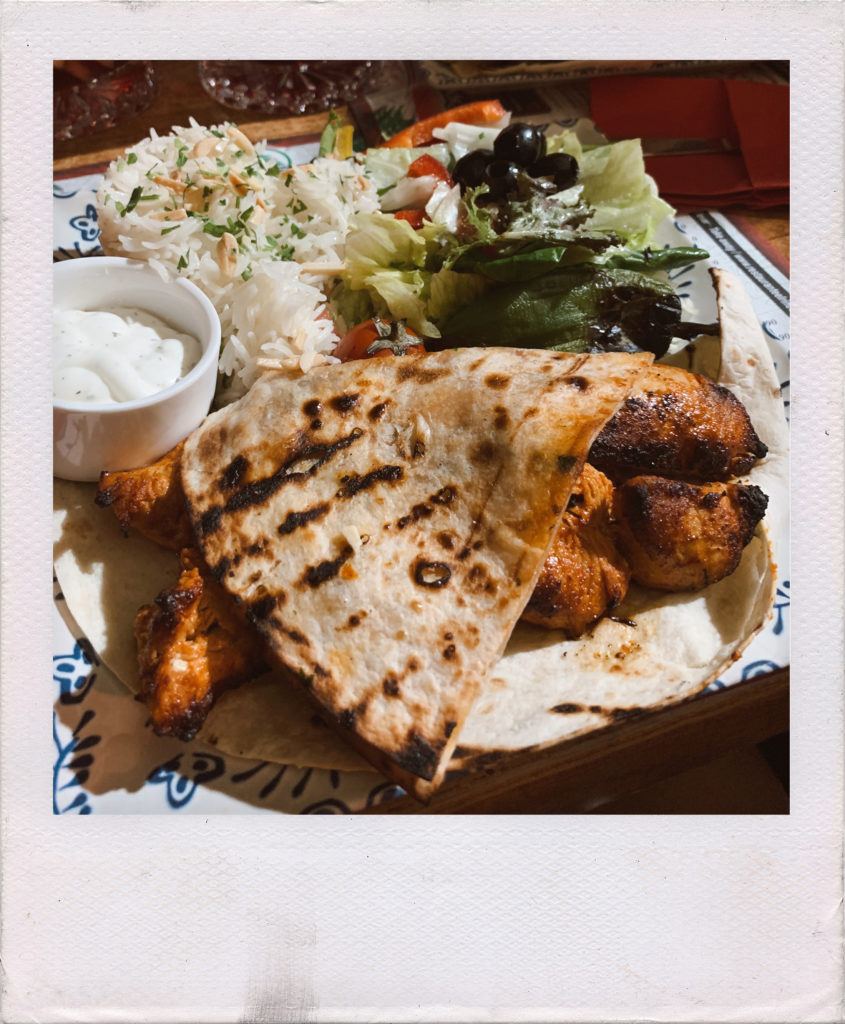
Some other places I enjoyed were Casa Orzaez and an ice cream shop across from Real Alcázar de Sevilla. I enjoyed a café con leche and tostada with queso and Spanish ham. I’m normally not a fan of ham, but the ham I had at Casa Orzaez was a thin slice of deliciousness. The ice cream shop we stumbled upon had Kinderbueno ice cream…there’s no way I could say no. Some other things I suggest trying while in Sevilla are churros con chocolate and fresh-squeezed orange juice.
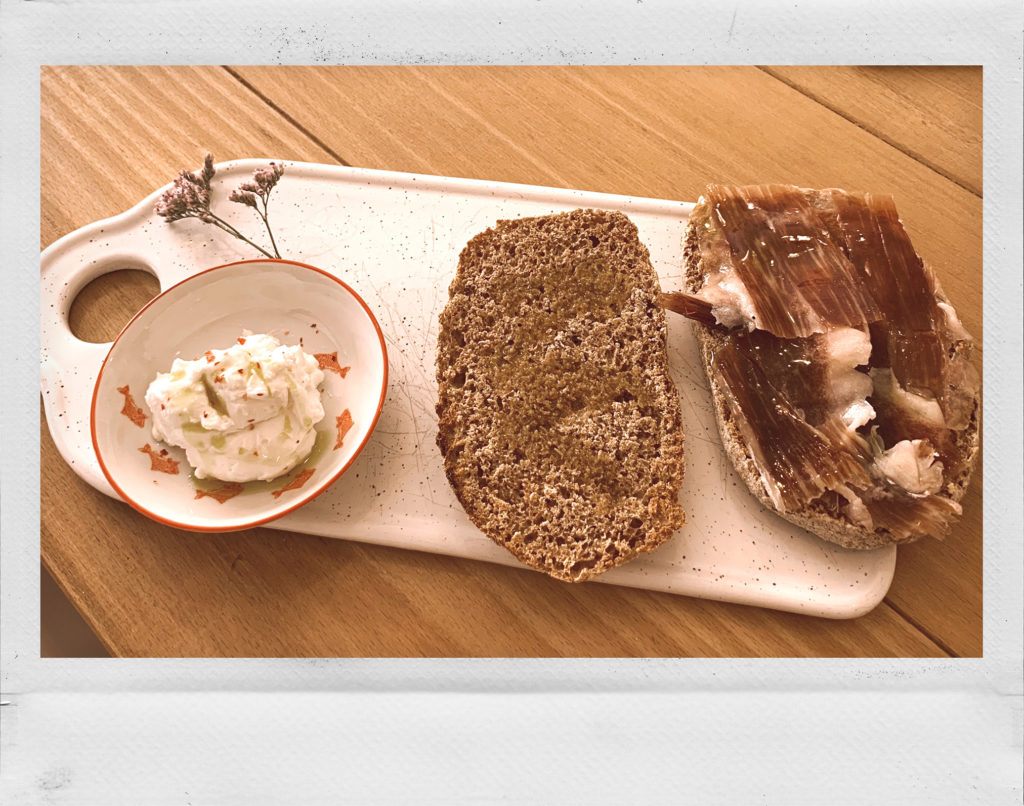
Sightseeing
There are so many things to do and places to see in Sevilla that I could easily have spent an entire week there. In addition to the number of historical landmarks, there are beautiful side streets everywhere you turn in the city center.
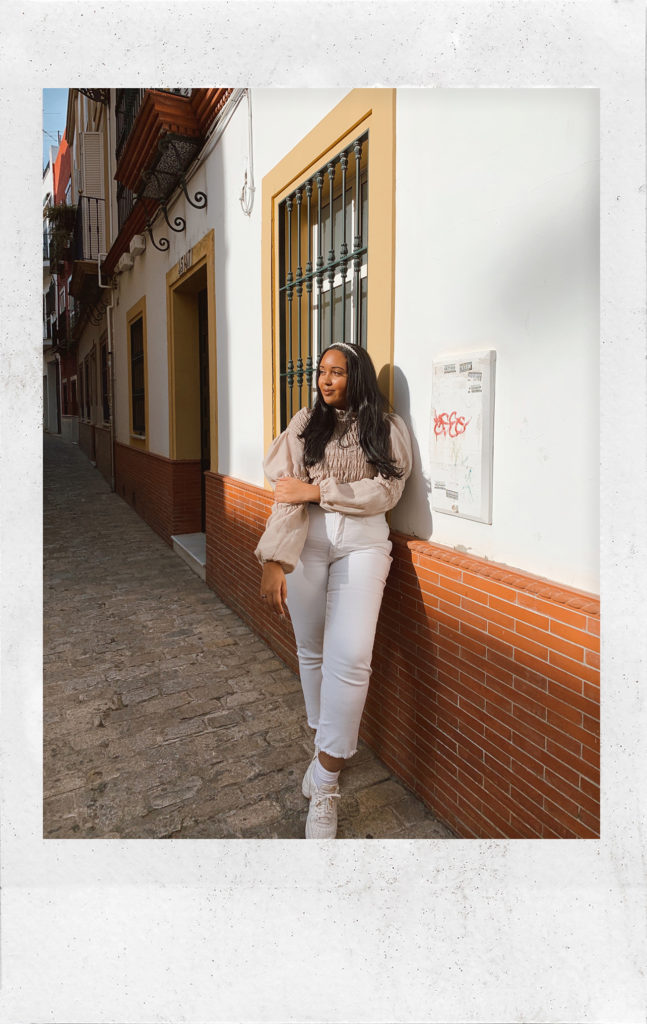
On our first day in Sevilla, my friends and I wanted to visit Museo Palacio de la Condesa de Lebrija, but by the time we arrived there was something going on with one of the floors of the palace and it was closed to visitors. Instead, we spent the afternoon wandering around the shopping area, longing to see Zara and Mango in their element. I purchased a pair of sandals at Zara that were half the price they are in the US… *facepalm*. There are also a number of artisans that make and sell teas, baskets, fans, you name it (not be confused with the mass-produced souvenir traps). I’ll definitely be bringing a larger suitcase next time just for the shopping.
Parque de María Luisa / Plaza de España
AKA the perfect destination on a beautiful day. My friends and I went to Plaza de Toros de la Maestranza to check out the outside of the building, as we didn’t want to get too much into the bullfighting aspect of it, then we took the bus to Parque de María Luisa. The park is absolutely stunning, and we wandered around until golden hour. We then made our way to Plaza de España, which is one of the most gorgeous landmarks I’ve ever seen- even more so at sunset. After wandering around the plaza, we caught a flamenco show. Originally, my friends and I wanted to see a flamenco dinner show… but seeing a more authentic, impromptu show at Plaza de España was even better.
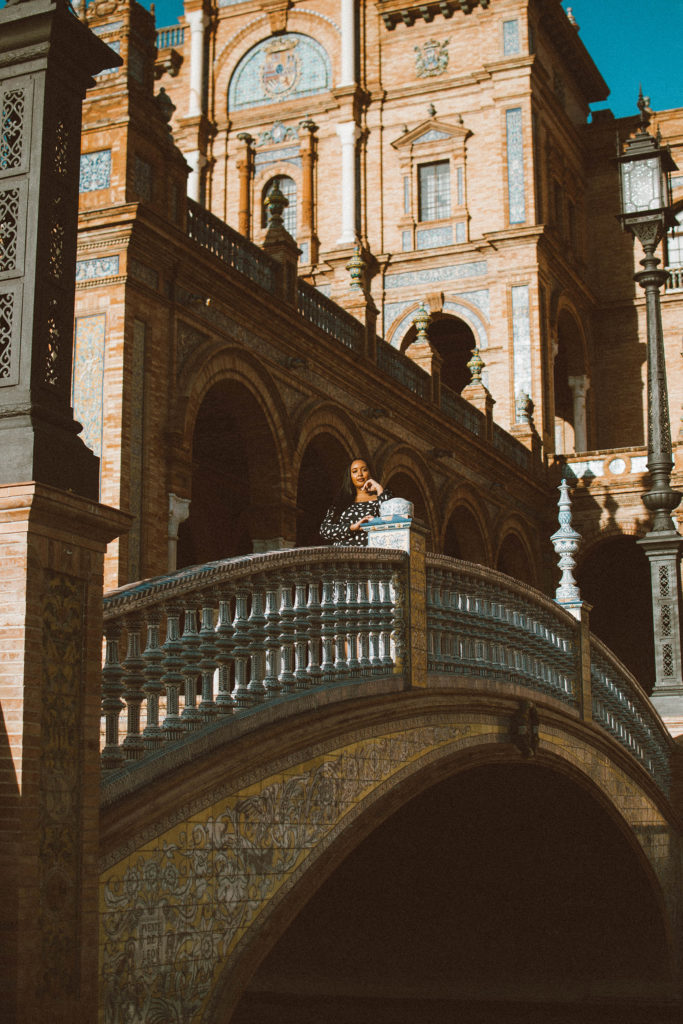
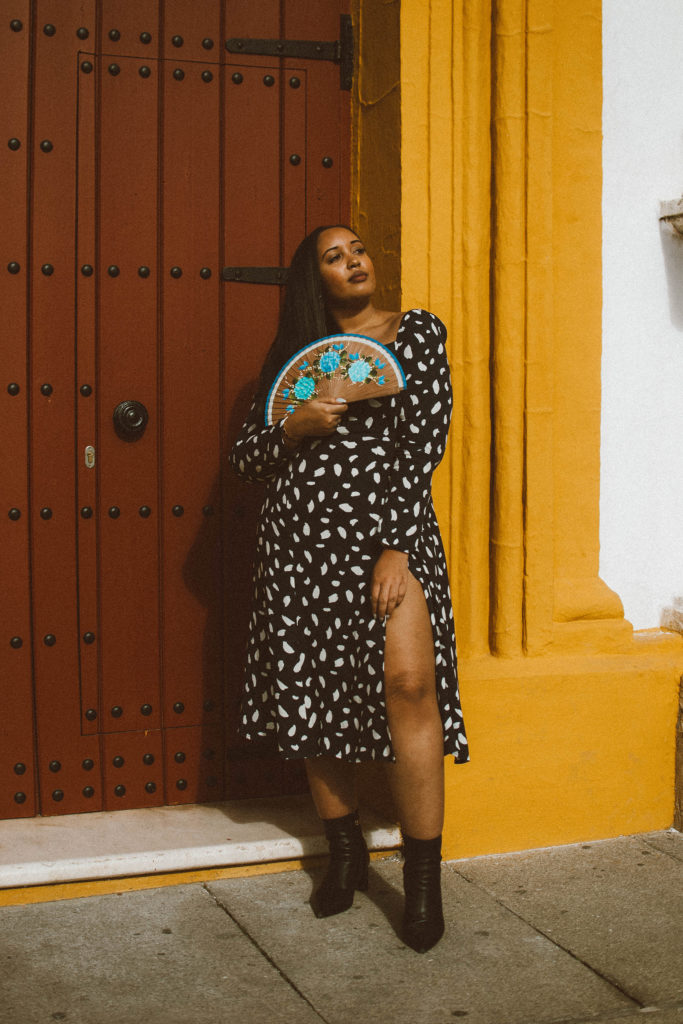
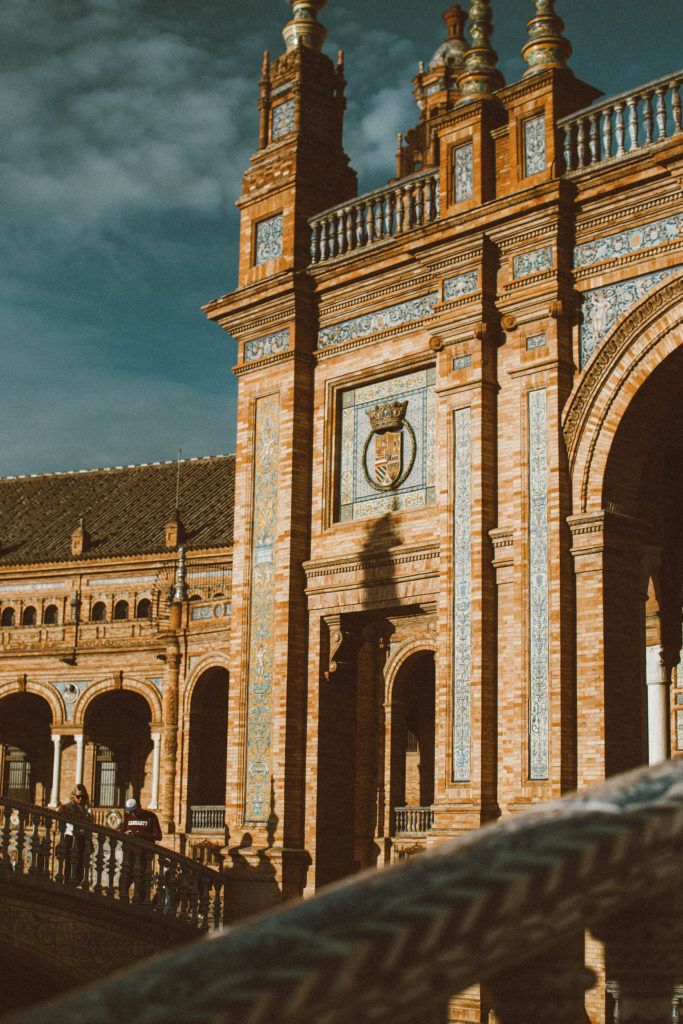
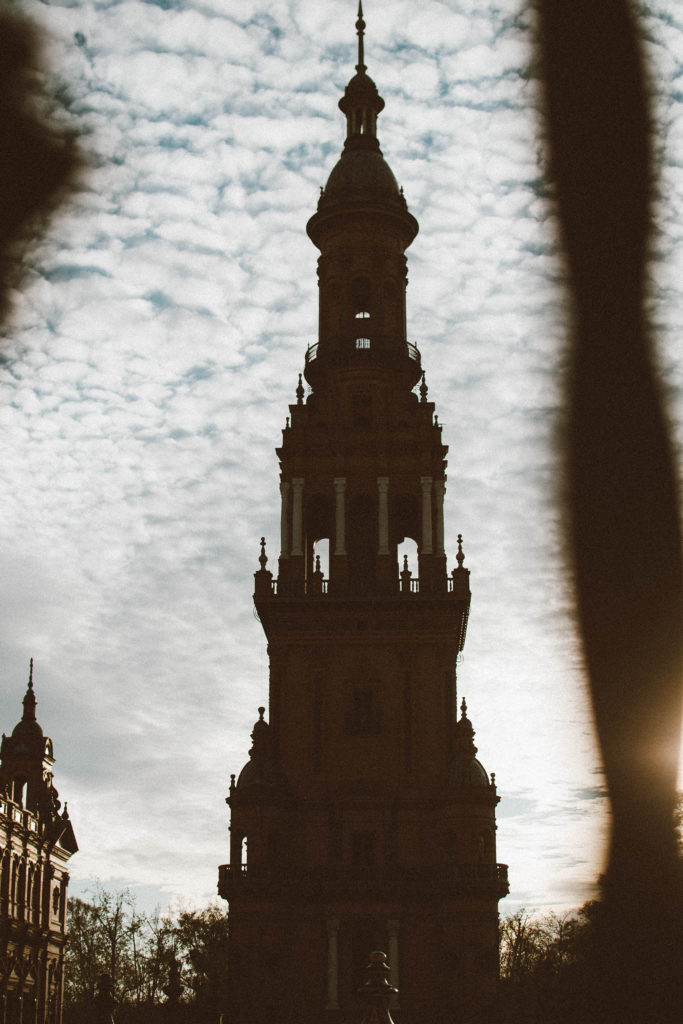
Real Alcázar de Sevilla
GoT fans may recognize this location from season five. This royal palace is everything, including being a UNESCO World Heritage site. Each room of the palace took my breath away, including the courtyards and gardens. It’s easy to spend an entire day there; I recommend booking a ticket in advance to skip the lines (which are usually very long). Admission was about 13 euros, and I paid an extra 6-7 euros for an audioguide; I typically prefer audioguides to guided tours so I can go at my own pace.
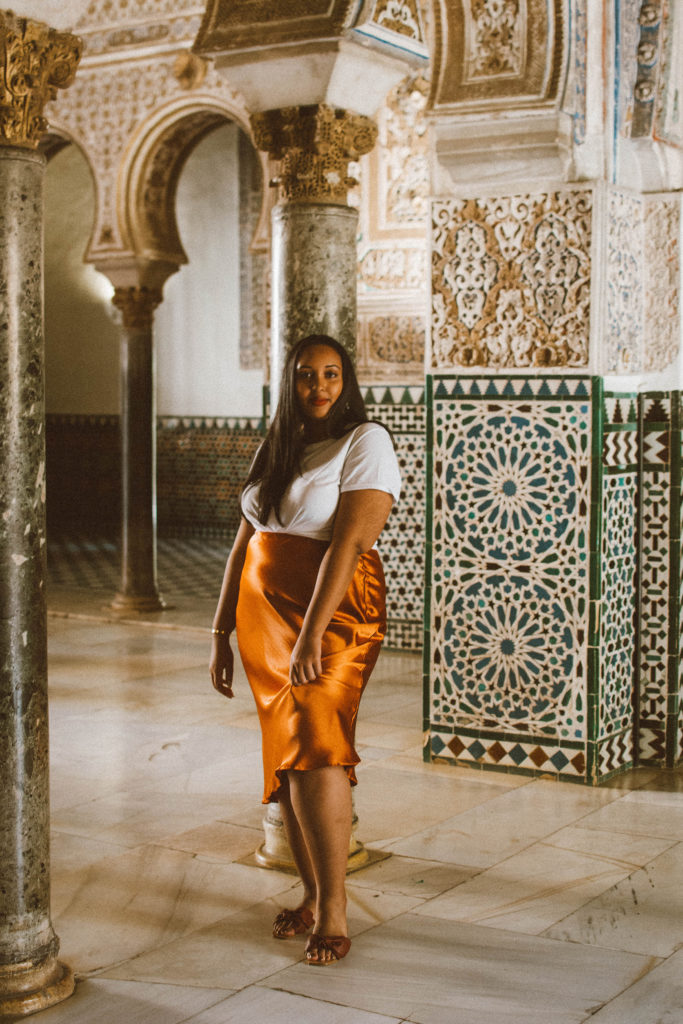
The Moorish influence was incredible, and it was great to visualize and learn more about things I vaguely remembered from AP World History. Since the palace is located close to a lot of other spots you may find yourself wanting to explore the city a little more.
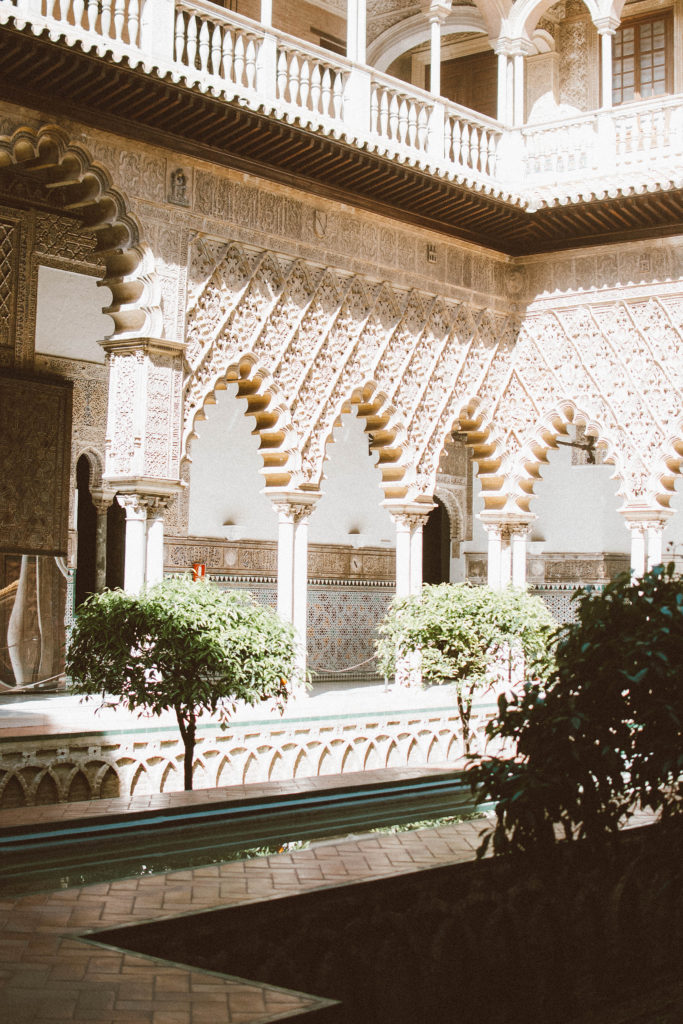
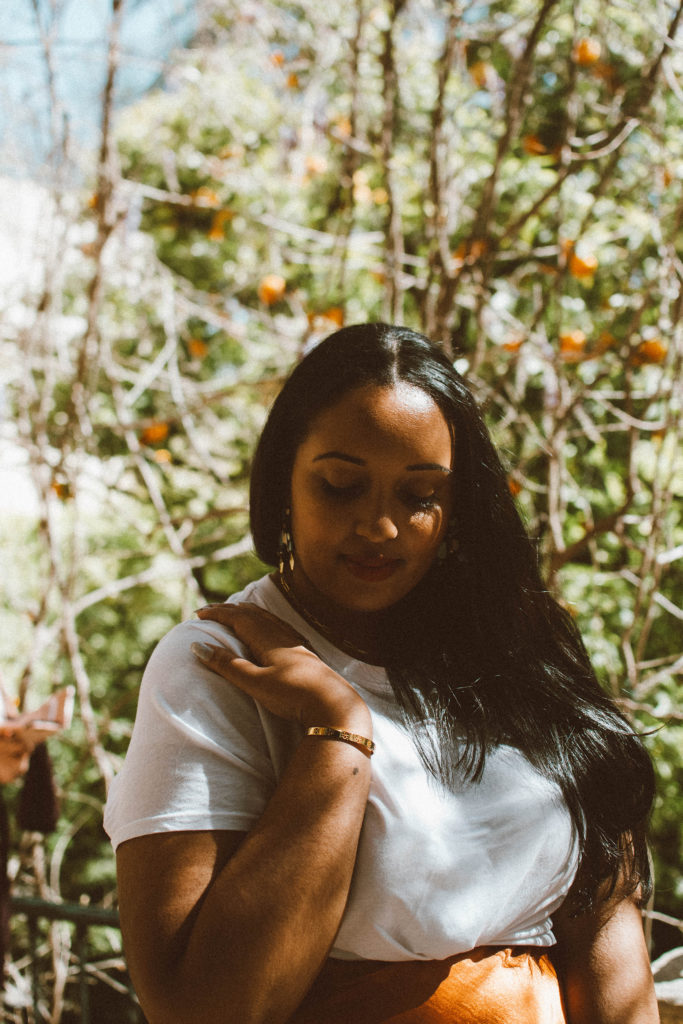
Museo Palacio de la Condesa de Lebrija
My friends and I eventually made our way back to Museo Palacio de la Condesa de Lebrija. This palace showcases a variety of architectural styles and some Roman relics one may find similar to those at Italica. Speaking of, we were supposed to go to Italica, it was definitely on our itinerary but didn’t end up happening… next time! The Lebrija Palace has an incredible ground floor that is open to exploring, but my favorite part was the tour of the upper floor; and of course, there are no photos allowed. To my knowledge, the only way to access the upper floor is to participate in the guided tour, which is included in the 12 euros it costs to enter.
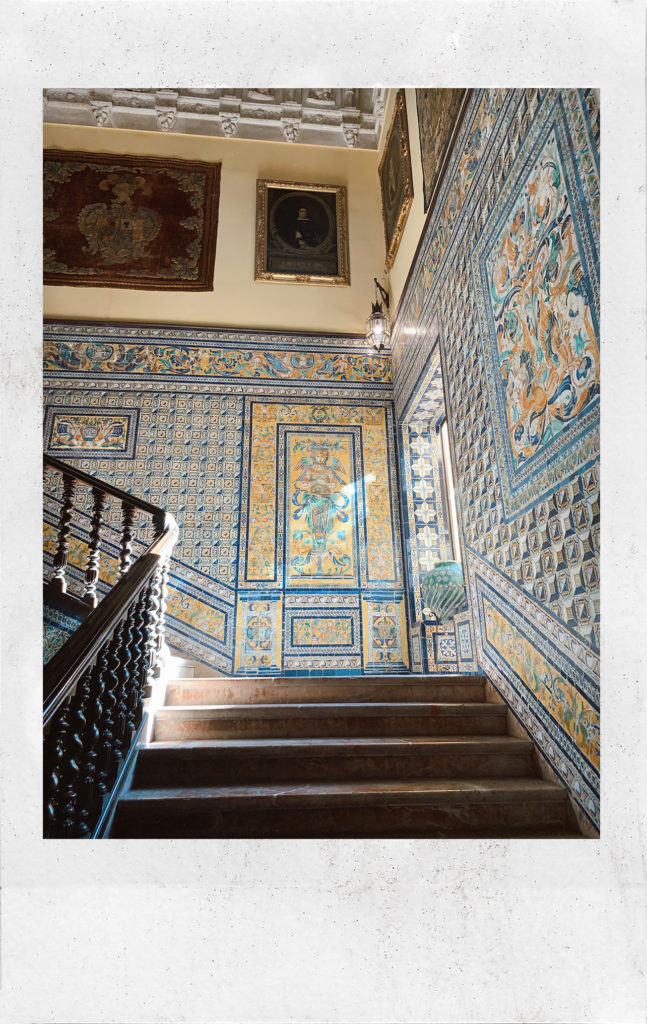
Some other places my friends and I hoped to see were Casa de Pilatos and the city of Córdoba. Although we got (mostly) everything done in four days, it would be great to spend a full week in Sevilla. I had the best time getting to know some of the locals and exploring a place I knew pretty much nothing about; it’s hard to describe the atmosphere, but I felt like the city was so lively, inviting, and jovial. And that’s how I fell in love with Sevilla, Spain. Here’s to more spontaneous adventures once the world has recovered.
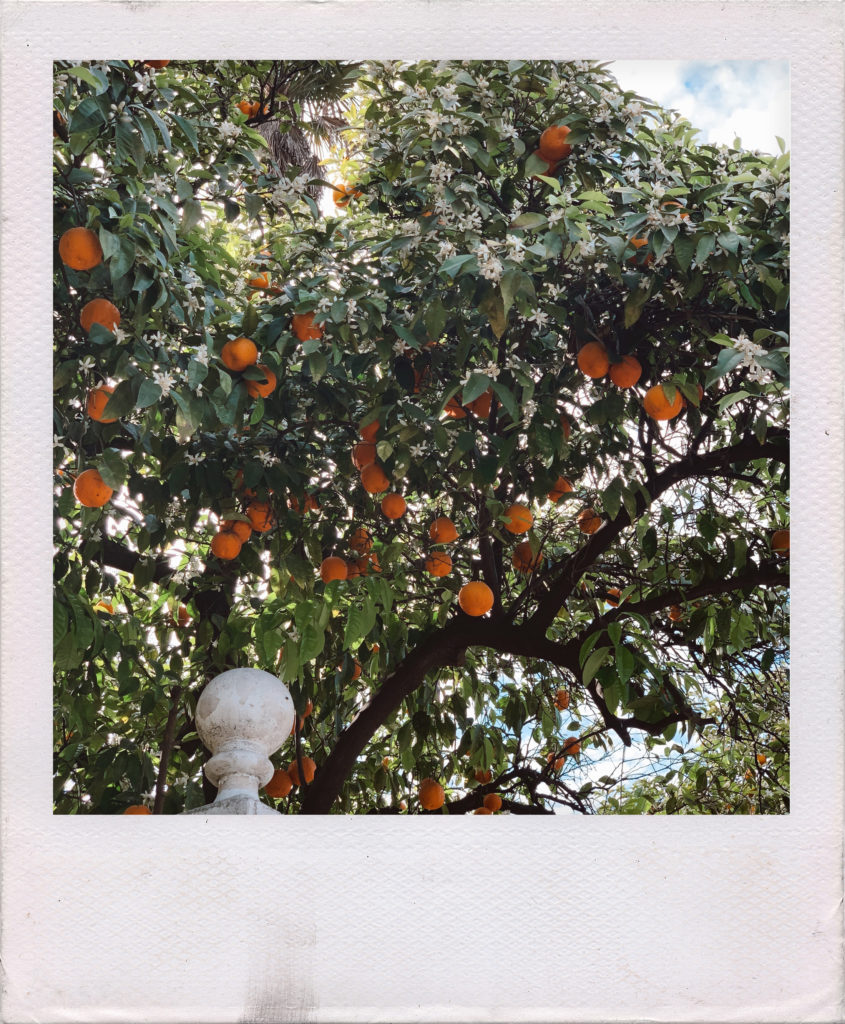



Leave a Reply